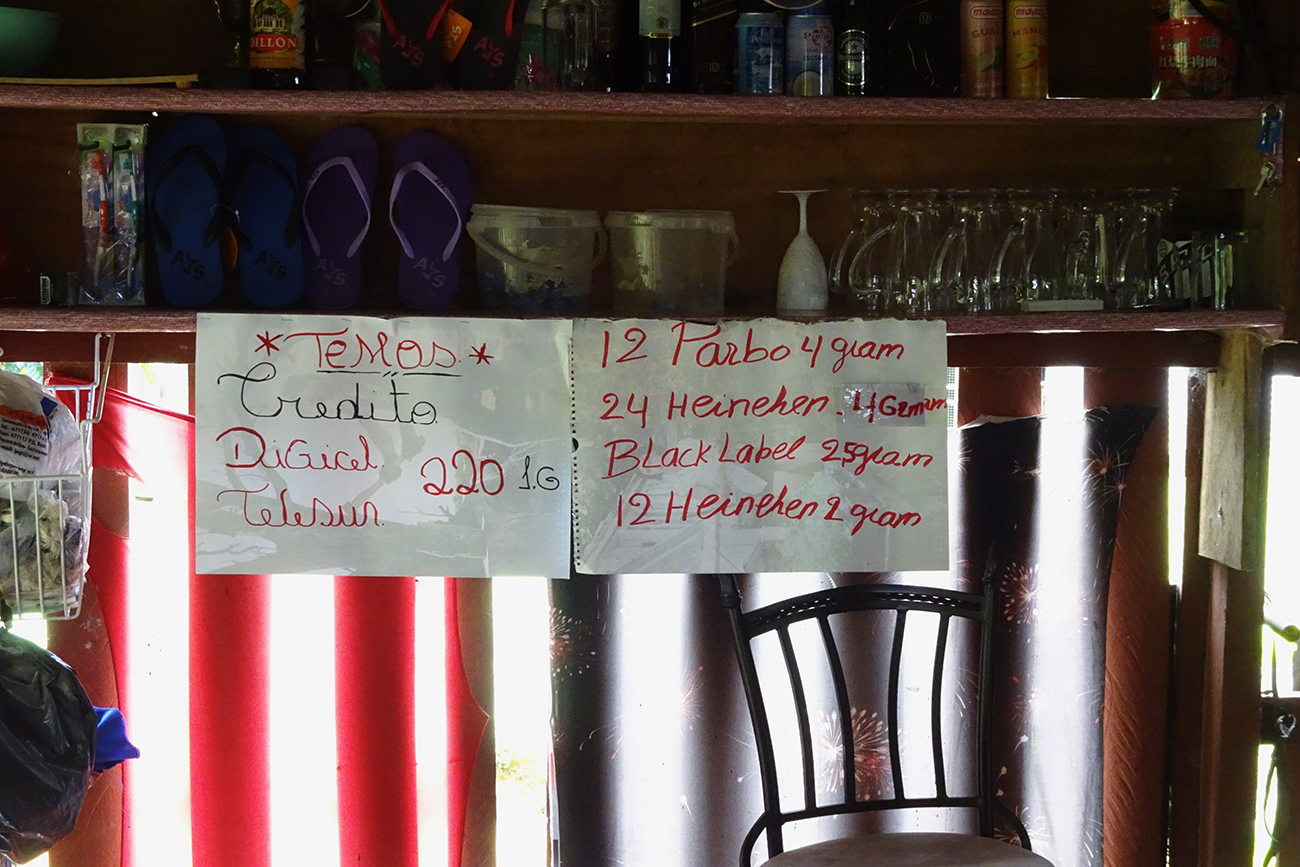In the Amazon, gold mining dictates a lifestyle that influences the development of local communities. It is alive in the names of hotels, streets, equipment stores, general shops, and a historical movie theatre. Words like “ouro”, “gold”, “garimpo” and “garimpeiro” are omnipresent in the streetscape. Depending on the distance from the closest villages, miners usually live in the vicinity of the mining site. The living quarters can be more or less structured, but there is always a hammock to ensure some comfortable rest. Closer to urban places sometimes wifi is available. In other cases, people have to walk to the nearest hill to be able to connect to telephone and internet lines to maintain long-distance relationship with families. In Brazil, cooperatives disseminate messages about the transformation of the image of garimpeiros. They promote miners as a social group concerned with sustainability issues, reducing mercury pollution, legalizing mining operations, and generating technological innovation for cleaner extraction.




1/4 Hotel dos garimpeiros
This hotel is located in the main street of Creporizão. The majority of garimpeiros migrate from region to region to work in different mines. Most mines are a far away, sometimes only reachable by plane, so when miners reach the village, they stay in hotels like this.
2/4 Hardware store on the Transgarimpeira road
“A casa do garimpeiro” offers every kind of material, tool and equipment for garimpeiros. Since the road was built, more specialized tools and equipment could reach these remote regions.
3/4 Rua dos garimpeiros
This is one of the main streets in the village. Peixoto has a stable community where everyone is directly or indirectly involved in the garimpo activity.
4/4 “Cine Ouro”
The “Gold” Movie Theater. This photo from the 1980s is part of the collection of the Museum of Itaituba. It shows how much the garimpo is part of the local history of the village and gold is present in many aspects of daily life; it is not just work life.






1/6 Miners’ camp
When a new mine is being developed, a place for miners and their families to live also has to be built. As the miners move frequently, they are very adept at building new barracks. Plastic sheeting and locally harvested wood are the main materials used.
2/6 Living quarters
The living quarters of the miners can be more or less structured, but there is always a hammock.
3/6 Kitchen in the mine camp
4/6 Child takes a bath in the mine camp
5/6 Family live in the mines
6/6 Broken freezer


1/2 Mobility is the basis for success
Gold seekers are always ready to leave for richer gold fields, better opportunities, or to take riches home. A hammock and a few bags are all that is needed. On the billboard of the gold buying company Ourominas, it says in Portuguese and in Surinamese (Sranantongo) "You can trust me."
2/2 After the gold rush
This is a remnant of a miners' shelter after they moved on.



1/3 “Aqui não tem luxo, mas tem wi-fi”
“Here we don’t have any luxury, but we have wifi.” This phrase is written at the entrance of a hotel located in Creporizão. This hotel hosts garimpeiros, gold buyers, and researchers.
2/3 Drinking for gold
In this bar, gold is currency. Telephone credits and alcoholic drinks are priced in grams of gold. The bar was recently built close to the mines where most gold is now found. At weekends, there are parties, sometimes bingo nights with live music, and many miners come here to relax.




1/4 Gold mining and the law
“When the law ignores reality, reality takes revenge by ignoring the law”, a message on a wall in Novo Progresso. Messages like this, both on walls and in conversations, are emblematic of the ever-transforming conflicts between garimpeiros and the law-enforcement state agents in the Brazilian Amazon.
2/4 “Transforming our image”
A newspaper clipping from the COOGAMIBRA (Cooperative of garimpeiros and miners of Brazil) stuck to a wall. It says: “Castelo dos Sonhos: transforming the image of our garimpos”. Cooperatives and associations form a network for information exchange and the mobility of ideas, experiences, and technology.
3/4 Legalization and transformation
A poster by COOPERTRANS (Cooperative of garimpeiros from Morais Almeida and Transgarimpeira road) inviting garimpeiros to join the cooperative. “Legalização e transformação” is their slogan. A cooperative goal is to ensure transformation of the sector and of the image of garimpeiros.
4/4 Model of a modern gold mine
The model that represents a modern gold mine was exposed during the "Dia do garimpeiro", a feast that celebrates the miner's profession, in the municipality of Peixoto de Azevedo. The initiative is part of the efforts of the local cooperative to reinforce good practices in the activity.